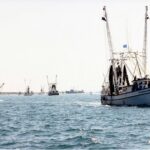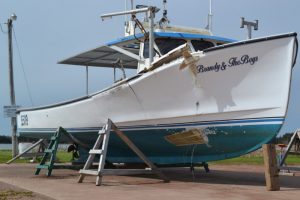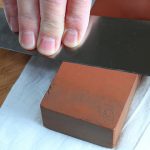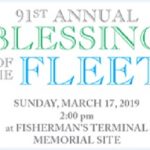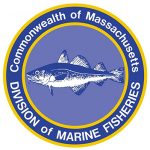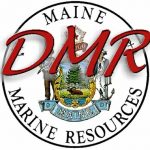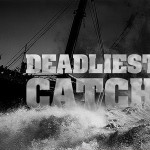Tag Archives: Marine Safety
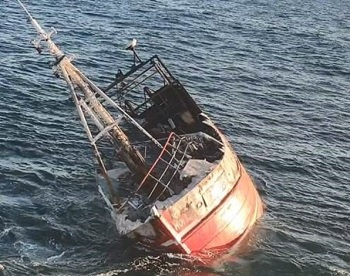
Charging electronic device likely the cause of fire that sank trawler
An unattended electronic device being charged has been cited as the potential cause of fire that sank a fishing vessel off the Cork coast last year. The FV Horizon, an Irish-registered fishing trawler, sank about 20 nautical miles off the Old Head of Kinsale on the morning of Thursday, May 14, 2021. According to the incident report from the Marine Casualty Investigation Board (MCIB), the boat’s skipper noticed a significant amount of smoke around the accommodation cabin door in the galley area at about 1.30am on the night in question. Grabbing a fire extinguisher, he descended down into the galley area,,, >click to read< 13:05
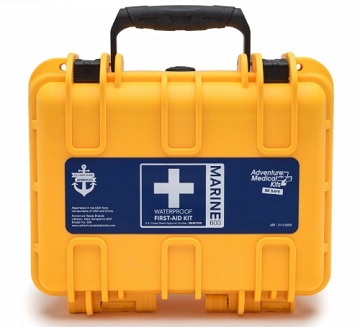
Adventure Medical Kits Introduces New Coast Guard Approved Marine Series
Adventure Medical Kits, the leader in outdoor first aid, announces today the fully revamped Marine series with seven premium medical kits created specifically for boating. The line offers a solution for consumers ranging from everyday recreational kayakers up to large-scale commercial fishing vessels. With a high-grade waterproof design and approval by the United States Coast Guard, boaters can feel safe and prepared for any excursion. >click to read< 08:50
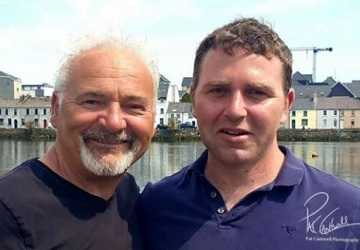
MCIB Report into Death of Galway Fisherman Published
An investigation into the death of a Galway fisherman who became entangled in gear off Salthill last year, found the weather deteriorated “significantly” after the vessel which he fished with his father left the harbour. Tom Oliver, a relative of the Olivers who rescued two paddleboarders in Galway Bay in August 2020, died after he was dragged over the stern of the six-metre fishing vessel Myia on November 2nd 2020. His father Martin, who was almost 62, was found dead at home the following morning. >click to read< 11:21
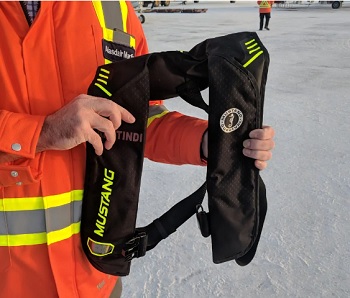
Canada: Fishing Industry’s high death rate ‘unacceptable’ and ‘preventable’
Though there is no obvious reason as to why fishing in Canada is so dangerous, or more dangerous than in other countries, there are certainly a number of factors at play. One of the reasons could simply be due to the large numbers of fish harvesters in Canada. Nova Scotia and Newfoundland have the greatest population of fish harvesters (according to 2009 numbers, Newfoundland and Labrador has around 17,000 fish harvesters and 6000 vessels, while Nova Scotia has around 13,000 fish harvesters and around 4,500 vessels). With so many people in the industry, a higher number of fatalities could be inevitable. >click to read< 10:26
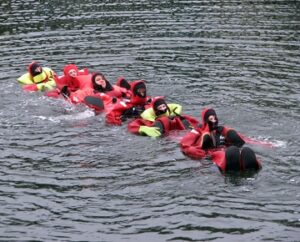
Student Lobstermen Complete Fishing Vessel Drill Conductor Training
Student lobstermen from Bremen, Bristol and South Bristol attended the U.S. Coast Guard approved Fishing Vessel Drill Conductor Training and Certification course provided through a cooperative effort between Maine Maritime Academy and McMillan Offshore Survival Training.,, Before a student lobsterman can purchase a license, they are required to successfully complete this course and complete a fishing log that includes in a minimum of 24 months, 200 fishing days and 1,000 hours. Maine Marine Patrol reviews the students’ fishing logs at the completion of every 250 hours. Photo’s, >click to read< 12:54 Congratulation’s, Gentlemen!
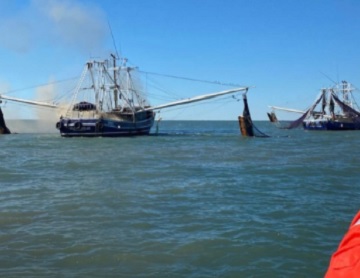
Fishing Vessel: Engine Room Only Shutoff Valve Let Fire Spread
Fuel shutoff valves outside the engine room might have stopped a fire that destroyed a shrimp boat after an explosion off Louisiana last year, federal investigators say. Other shrimpers saw the smoke and rescued all four people from the F/V Master Dylan. But the $300,000 boat was a total loss, the National Transportation Safety Board said in a report issued Tuesday. The report said one of the boat’s two generators exploded while the crew was shrimping off Port Fourchon about 7:45 a.m. on Dec. 1. The boat was registered in Louisiana but had left Port Arthur, Texas on Nov. 29. The captain emptied a fire extinguisher into the engine room without diminishing the blaze. >click to read< 15:14
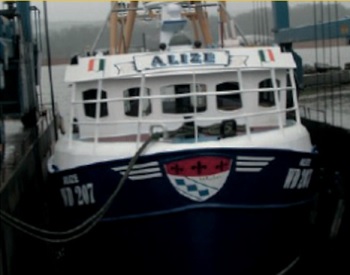
PFD Reminder for Fishing Crews Following Report on Scallop Boat Sinking Incident That Cost Two Lives
The Department of Transport has issued a new Marine Notice on the correct use of lifejackets or personal flotation devices PFD’s on fishing vessels. It follows the report earlier this month from the Maritime Casualty Investigation Board into the sinking of the FV Alize off Hook Head early last year. Two fishermen died after the F/V Alize sank while fishing for scallops out of Duncannon, Co Wexford on 4 January 2020. Joe Sinnott was recovered from the scene by the Irish Coast Guard’s Waterford-based helicopter Rescue 117 but was later pronounced dead at University Hospital Waterford. >click to read< 12:04
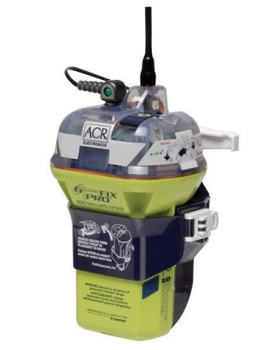
F/V Falling Star reportedly was not carrying an EPIRB aboard the vessel
Glenn Tuttle, co-manager of boatwatch.org, says men on the ill-fated Falling Star lobster fishing vessel could all have been rescued had the boat been equipped with an emergency position-indicating radio beacon (EPIRB). Ten of the 15-member crew were rescued Thursday and the other five are now said to be dead. F/V Falling Star was returning from dry docking/routine maintenance overseas when it went missing on July 6. According to Tuttle, had there been an EPIRB installed on the vessel more men could have been saved. >click to read< 08:07

The Maritime and Coastguard Agency to carry out unannounced inspections of fishing vessels across the UK.
The agency said that inspections are being carried out as part of ongoing work to improve fishing vessel safety in an industry recognized to be one of the most dangerous in the world. Since November 2020 there have been eight deaths in the industry including one in Shetland when a fisherman fell overboard from a local trawler in February. Between 2011and 2020 the Marine Accident Investigation Branch (MAIB) reported 60 fatalities from UK fishing vessels. >click to read< 21:50
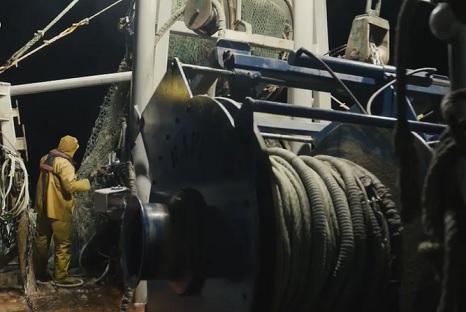
Home and Dry: Safety campaign to get fishing crews ‘Home and Dry’ following deaths in Brixham
A safety campaign has begun to reduce the ‘alarming’ number of deaths among fishing crews. It comes as more than 10% of fatalities in the fishing industry over the last decade have happened in the last six months. In the past six months, seven fishermen across the country, including two on a trawler from Brixham, have lost their lives at sea. Six of the men who died ended up in the water. Now the industry’s safety group is launching the Home and Dry campaign aims to help those on vessels stay safe by educating them on practices they can use to reduce risks. >Video, click to read< 08:12 Shetland fisherman’s death highlighted in new man overboard prevention campaign – The lives lost included Shetland fisherman Joseph Lacaste, 45, who died while working on the trawler Copious in February. >click to read<
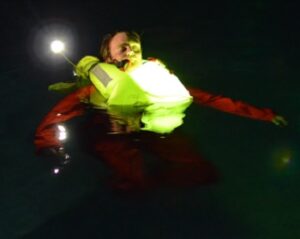
Innovation in Survival
In simplest terms, when deployed in the water, a life jacket gives the casualty time to survive and reduces time for location and recovery. Flotation is the first obvious tool in survival. Spinlock dynamic bladders are designed to lift and rotate a casualty on to their back, holding the mouth above water and the body at a 45-degree angle to the horizontal, even if they are unconscious.,, On inflation of the life jacket the spray hood is simple to deploy.,,, the only SOLAS approved life jacket light that lifts the powerful led light above the user’s head, making the light visible for 360 degrees rather than only from the front of the casualty. >click to read< 07:50
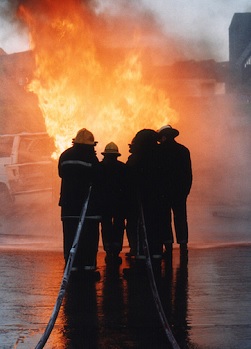
SAFETY: A gradual culture change has been taking place across much of the fishing industry
As one of the world’s leading insurers of fishing vessels, Sunderland Marine keeps a close eye on the fishing industry’s evolution and has encouraged increasing safety awareness. Sunderland Marine has taken the initiative where it has seen that improvements can be made,,, This is not just in the UK, but also through initiatives in Australia and New Zealand, both of which have also seen a safety culture developing in the right direction In the US, Sunderland Marine has also been instrumental in making available independent safety drills for crews working on East Coast draggers and scallopers. In addition, the offshore crab fishery that’s familiar to anyone who has seen the Deadliest Catch on TV has seen positive changes. photos, >click to read< 17:32
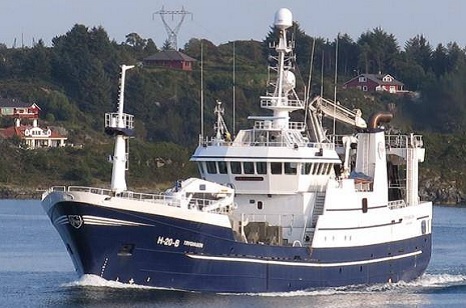
A World First: Activation of Commercial Iridium Global Maritime Distress Safety System on board Norwegian Trawler
The Norwegian trawler F/V Trygvason has put to sea following installation of two Lars Thrane LT-3100S GMDSS terminals by local marine services company Brommeland Elektronikk A/S, with Iridium GMDSS service provided by remote communications solutions provider, Applied Satellite Technology (AST). The terminal manufactured by Lars Thrane A/S is the only GMDSS terminal paired with Iridium’s global network. >click to read< 12:48
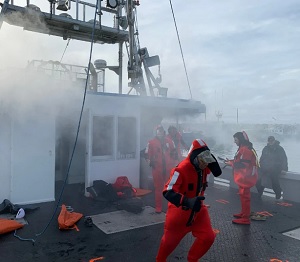
Neglected safety gear on fishing boats endanger fishermen – If it’s not maintained, it’s likely not going to work
“It’s one thing to go out and buy all this for your vessel, but if it’s not maintained it’s likely not going to work for you when you need it,” said Matthew Duffy, a safety adviser with the association. Duffy has seen survival suits full of holes, rotted ropes, and life rings tied so tightly they couldn’t be used. “We did a man-overboard drill where we got the crew involved and they got their immersion suits out,” said Duffy. “One crew member opened it up and there was a squirrels’ nest in one of them, you know, chewed right through the suit,,, >click to read< 07:40
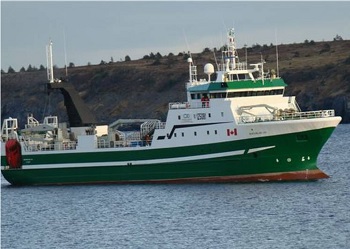
Transportation Safety Board: Factory freezer trawler fire met with uncoordinated response
A fire on board OCI’s factory-freezer trawler Newfoundland Lynx in January started in the vessel’s sauna and, while the fire was contained, it was met with an uncoordinated response by the crew due to a lack of fire drills that involved “realistic scenarios,” states a Transportation Safety Board (TSB) report released this week. The report also notes that some of the firefighting equipment on board was in a deteriorated condition and that there wasn’t enough of some key parts of the firefighting equipment. It advised in the report that, “It is important that crews perform fire drills on a regular basis to confirm that firefighting equipment is in working order, and to reinforce their knowledge of how to use the equipment and of assigned emergency duties. It is also important that these drills include varied and realistic scenarios so that crews are prepared to respond effectively to emergencies.” >click to read< 08:21

Transportation Safety Board says ‘countless’ reports show fishermen need to wear PFDs, use EPIRB emergency beacons
Transportation Safety Board of Canada (TSB) investigator Chris Morrow said it has concluded many times that fishermen need to wear personal flotation devices (PFDs) and they have to have emergency beacons on board. He said the investigation into the capsizing of the Ocean Star II lobster  boat found those to be consistent issues. An emergency beacon, known as an electronic position indicating radio beacon or EPIRB, might not have helped the crew aboard the Ocean Star II, but Morrow said they were in the water a long time without PFDs.,, On May 5, 2018, > Richard Moreau and Liz O’Connell <drowned after their small crabbing boat capsized near Port Medway, N.S. >click to read< 14:40
boat found those to be consistent issues. An emergency beacon, known as an electronic position indicating radio beacon or EPIRB, might not have helped the crew aboard the Ocean Star II, but Morrow said they were in the water a long time without PFDs.,, On May 5, 2018, > Richard Moreau and Liz O’Connell <drowned after their small crabbing boat capsized near Port Medway, N.S. >click to read< 14:40
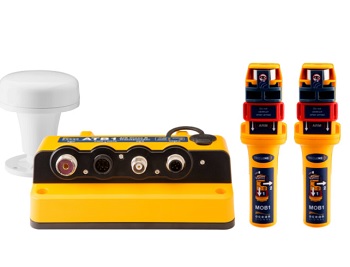
Complete AIS Kit to Provide Boat Owners with Affordable Man Overboard System
The new Ocean Signal ATB1 AIS package unites the latest in AIS Class B+ technology in the ATB1 transponder with two award-winning rescueME MOB1 man overboard beacons. Ensuring the best chance of rapid rescue from either the survivor’s own vessel or other vessels in the vicinity if someone falls into the water, the AIS kit brings onboard safety to a new level. Easily integrated within a life jacket, the compact MOB1 communicates with the ATB1, as well as boats within about a five-mile range, and will provide two methods of rapidly relaying the man overboard’s position in an emergency. >click to read< 07:49
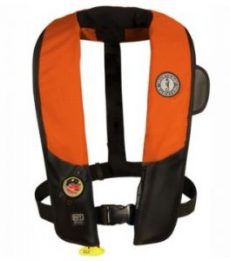
PFDs: Too few commercial fishermen wear life jackets
I recall a great quote from the late Molly Benjamin, a Cape Cod Times fishing columnist and well-known voice for the New England fishing community. In one of her articles on a marine casualty, she wrote, “the Sea is not the home element of humans; we visit at our own risk.” Not wearing a lifejacket while fishing is the equivalent of driving down the most dangerous road in Maine, at high speed, with your seatbelt in the trunk of your car. The frustrating thing is fishermen know the hazards but continue to flout the lifejacket’s indisputable life-saving value. by Capt. Brian LeFebvre, USCG >click to read< 07:22
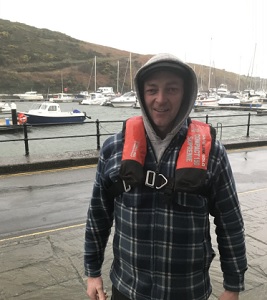
PFDs: Encourage fishermen to wear lifejackets while on deck – Safety training and equipment saved lives
The Polaris sank so rapidly that skipper Gordon Mills only had time to send out a Mayday to the coastguard before the vessel became submerged. But it was local fishing vessel, the Lynn Marie, which arrived first on scene. The skipper and a crew member from Polaris had been in the water for at least 15-20 minutes before help arrived. Skipper of the Lynn Marie feared the worst as they arrived at the scene as the Polaris had already gone below the water. He stopped his engine and heard two men in the water shouting. >click to read< 07:38
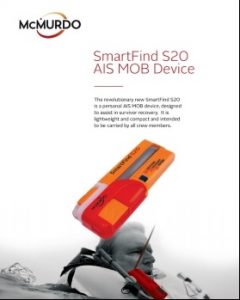
Be ready! Electronics for Man Overboard Alert
Prudent seamanship and vigilance play vital roles in preventing and responding to man-overboard (MOB) situations. Today, there are also marine electronic products and systems from brands such as ACR Electronics, McMurdo and Ocean Signal that augment precautions, speed rescues, and help avoid tragic consequences.,, All of these systems include the use of compact, wearable devices. Many are designed to attach to a life jacket or article of clothing. Some are manual, and others have automatic triggers that include water immersion, increased boat distance, and inflatable-life-jacket activation. >click to read< 12:21
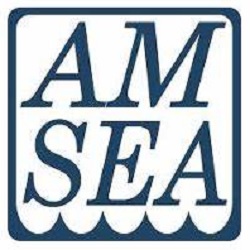
AMSEA to offer Mariner’s First Aid & CPR Class in Sitka, Alaska on February 22
The Alaska Marine Safety Education Association (AMSEA) will offer a Mariner’s First Aid & CPR/AED class in Sitka, Alaska on February 22, 8:00 AM to 5:00 PM at N.S.R.A.A., 1308 Sawmill Creek Road. The cost for the class is $100, including sales tax Interested mariners may register online at www.amsea.org or call (907) 747-3287. For more information, >click here< 09:22
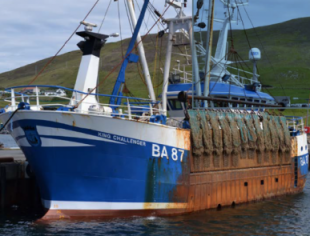
Lifejacket could have avoided Shetland fisherman’s death, FAI finds
The death of a fisherman working off Shetland could have been avoided if he wore a lifejacket, a Fatal Accident Inquiry has found. As a result a sheriff has called for it to be mandatory for all fishermen to wear a lifejacket while working on deck. Scott James Rennie, 31, died on June 23, 2016, at the Gilbert Bain Hospital in Lerwick. An hour before his death he was working on the fishing vessel King Challenger. >click to read< 19:55
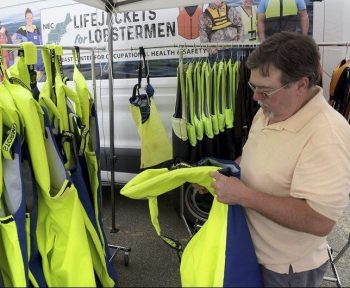
Tide turning on wearing safety gear – Campaign says lobstermen listening
On Wednesday, Carpenter stopped by the Everett R. Jodrey State Fish Pier to check out the 11 different varieties of personal flotation devices available for inspection and purchase as part of the Lifejackets for Lobstermen campaign being run by the Northeast Center for Occupational Health and Safety. The campaign, designed to convince more commercial lobstermen to wear personal flotation devices while fishing, has spent the summer in 40 lobstering communities up and down the New England coast. Photo’s, >click to read< 15:18

Stability monitor enhances vessel safey.
Developed by Hook Marine Ltd, the Scottish-based safety engineering company, the SeaWise real-time stability monitor, has been specially designed for the protection and survival of small vessels, in particular fishing boats. With accident statistics showing that the majority of fishermen are lost when a vessel capsizes or founders,,, The system monitors any loss of stability through this continuous roll measurement and features a simple traffic light display which gives a green light during normal operation, an amber light when stability is decreasing, and a red warning when there is real danger of capsize. >click to read<09:04

Alan Holman – Make PFDs mandatory on fishing boats
It has been noted in past columns in this space that fishing is the most dangerous occupation in Canada. On a per capita basis more people die in the fishing industry than any other, including construction, mining and policing. But, is enough being done. All other Island industries operate under stringent health and safety regulations; the fishery, not so much. Not all, but most Island fishing boats are too small, or they don’t go far enough from shore, to fall under the federal department of transport regulations concerning safety measures requiring the crew to wear life-jackets. And, most Island fishermen think that’s alright. They don’t want any more regulations. This lack of regulation would be fine, if Island fishermen were taking measures to prevent the kind of accident that happened recently off Naufrage when 22-year-old Jordan Hicken fell overboard, unnoticed, as the boat headed out to sea. >click to read<14:29
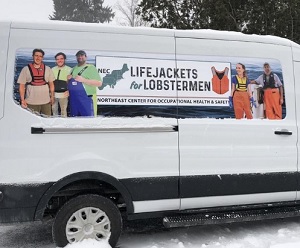
Lifejackets for Lobstermen back on SouthCoast in June
Lifejackets for Lobstermen is making its way back to the SouthCoast. The program travels between ports in Maine and Massachusetts in vans, letting lobster and fishermen try on different life jackets and purchase one at a 50 percent discount. The Northeast Center for Occupational Health and Safety: Agriculture, Forestry, and Fishing (NEC) developed the program after a study showed that in a large portion of lobster fishing deaths, recovered victims weren’t wearing life jackets.,,,will be returning in early June on the following dates and at the following locations, >click to read<08:51

Brixham fishing crew honoured with first ever ‘Life Saver Award’ after miracle rescue
It was dark, it was cold, it was stormy with 70knot winds and waves 20ft high when young fisherman Reegan Green was lifted off his feet and washed overboard from a Brixham trawler 25 miles off the Devon coastline. Experienced air and sea rescue personnel who spent an hour looking for Reegan in the dark knew one thing – they had never before pulled a fishermen alive and conscious from the sea in similar conditions. But this time things were different. >click to read<18:01
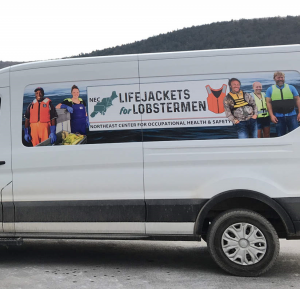
Lifejackets for Lobstermen van to visit Midcoast
A group seeking to promote the use of life jackets among lobstermen will visit several Knox County fishing towns during the weeks of May 6 and May 13. Researchers at the Northeast Center for Occupational Health and Safety: Agriculture, Forestry and Fishing have been working with lobstermen in Maine and Massachusetts over the past few years to understand why life jacket use has been relatively uncommon among fishermen in this fishery sector. One result has been the “Lifejackets for Lobstermen” campaign. The vans will make local stops at the following places. All stops will begin at 10 a.m. May 8, Olsen’s Wharf, Pleasant Point Gut, Cushing, 10 a.m. May 9, Simmons Wharf, Friendship, May 10 and May 13, Tenants Harbor Co-op, Port Clyde May 14, Atwood Lobster, Spruce Head May 15, Public landing next to Ship to Shore Lobster, Owls Head May 16, Rockland Fish Pier, >click to read<11:44


































